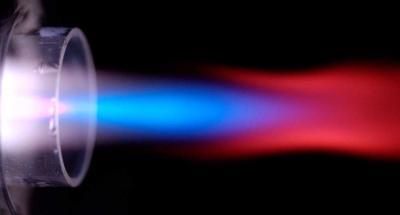TORONTO, ON – Scientists at the University of Toronto, Stanford and Columbia Universities have developed a way to measure the action and function of candidate prescription drugs on human cells, including the response of individual cells, more quickly and on a larger scale than ever before.
The researchers say their "mass cytometry" technology has the potential to transform the understanding of a variety of diseases and biologic actions, and will provide a better tool to understand how a healthy cell becomes diseased. Clarifying the underlying biochemistry of cells may enable earlier detection of illness and ultimately advance personalized medicine, notably for cancer and HIV treatments, by offering more and less aggressive options for treatment.
"We've shown that drug response is specific to certain sub-populations of cells, and gained insight into the signaling cascade that defines that response" says Scott Tanner of U of T's Department of Chemistry, who led the development of the technology used in research to be published this week in Science. "We've also shown that a drug can activate or suppress multiple response pathways simultaneously, and that these responses are modified when a combination of drugs are administered."
"Together, this suggests that the technology will be of significant value in the development and validation of rational drugs to target particular pathogens – a quantum step towards the provision of personalized medicine," says Tanner.
Mass cytometry allows simultaneous measurement of as many as 100 biomarkers – specific physical traits of cells used to measure or indicate the effects or progress of a disease, illness, or condition – in single cells, at 1000 cells per second. It applies the analytical capabilities of atomic mass spectrometry – used to measure the number and type of atoms that comprise a sample – to the technique of flow cytometry, which is a method of examining thousands of microscopic particles per second by suspending them in a stream of fluid or gas and passing them through an electronic detection apparatus. The two very disparate disciplines previously had no reason to be combined.
The U of T scientists developed the chemistry and methods of attaching the metal atoms necessary for the detection of the vanishingly rare biomolecules of interest at the individual cell level, where personal therapeutic response is defined. They also developed a unique instrument to simultaneously measure a large number of these diagnostic signals for individual cells at a high analysis rate. Garry Nolan, a professor of microbiology and

The CyTOF instrument used to carry out mass cytometry. The apparatus can measure the physical traits of as many as 1,000 single biological cells per second.
(Photo Credit: Image : Sergey Vorobiev, DVS Sciences Inc.)
immunology at Stanford University and lead investigator of the research presented in this paper, adapted and expanded his earlier work in flow cytometry to take advantage of the much higher power that mass cytometry provides.
Nolan and his colleagues at Stanford, with collaborators at Columbia, used the U of T technology to monitor 34 different substances found inside and on the surface of different cell types produced in human bone marrow, the place where all immune and blood cells, as well as blood disorders such as leukemia, originate. They were able not only to correctly categorize over a dozen different immune cell types but, at the same time, to peer inside the cells and learn how various internal processes differed from one cell type to the next. "We can tell not only what kind of cell it is but what it's thinking, and what it may become," says Nolan.

A close-up of the argon plasma flame through which cells are passed and superheated to individual ions for measurement in the CyTOF.
(Photo Credit: Image : David B. Aeschliman, Stanley et al, J. Anal. At. Spectrom., 2003, 18, 1008-1014, DOI: 10.1039/B302546M Reproduced by permission of The Royal Society of Chemistry.)
Source: University of Toronto